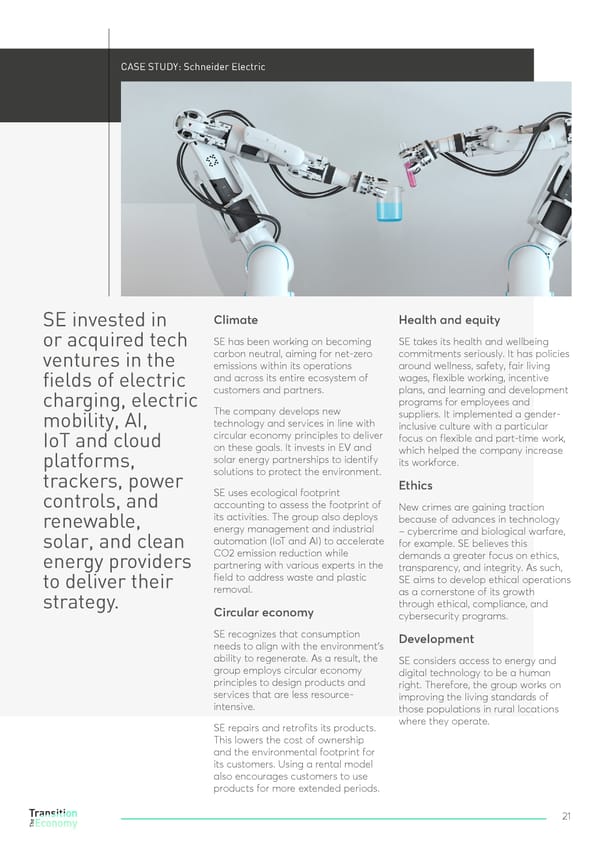CASE STUDY: Schneider Electric SE invested in Climate Health and equity or acquired tech SE has been working on becoming SE takes its health and wellbeing ventures in the carbon neutral, aiming for net-zero commitments seriously. It has policies emissions within its operations around wellness, safety, fair living fields of electric and across its entire ecosystem of wages, flexible working, incentive customers and partners. plans, and learning and development charging, electric The company develops new programs for employees and mobility, AI, technology and services in line with suppliers. It implemented a gender- circular economy principles to deliver inclusive culture with a particular IoT and cloud on these goals. It invests in EV and focus on flexible and part-time work, solar energy partnerships to identify which helped the company increase platforms, solutions to protect the environment. its workforce. trackers, power Ethics controls, and SE uses ecological footprint accounting to assess the footprint of New crimes are gaining traction renewable, its activities. The group also deploys because of advances in technology energy management and industrial – cybercrime and biological warfare, solar, and clean automation (IoT and AI) to accelerate for example. SE believes this energy providers CO2 emission reduction while demands a greater focus on ethics, partnering with various experts in the transparency, and integrity. As such, to deliver their field to address waste and plastic SE aims to develop ethical operations removal. as a cornerstone of its growth strategy. Circular economy through ethical, compliance, and cybersecurity programs. SE recognizes that consumption Development needs to align with the environment’s ability to regenerate. As a result, the SE considers access to energy and group employs circular economy digital technology to be a human principles to design products and right. Therefore, the group works on services that are less resource- improving the living standards of intensive. those populations in rural locations SE repairs and retrofits its products. where they operate. This lowers the cost of ownership and the environmental footprint for its customers. Using a rental model also encourages customers to use products for more extended periods. 21
 The Transition Economy High Res Page 20 Page 22
The Transition Economy High Res Page 20 Page 22